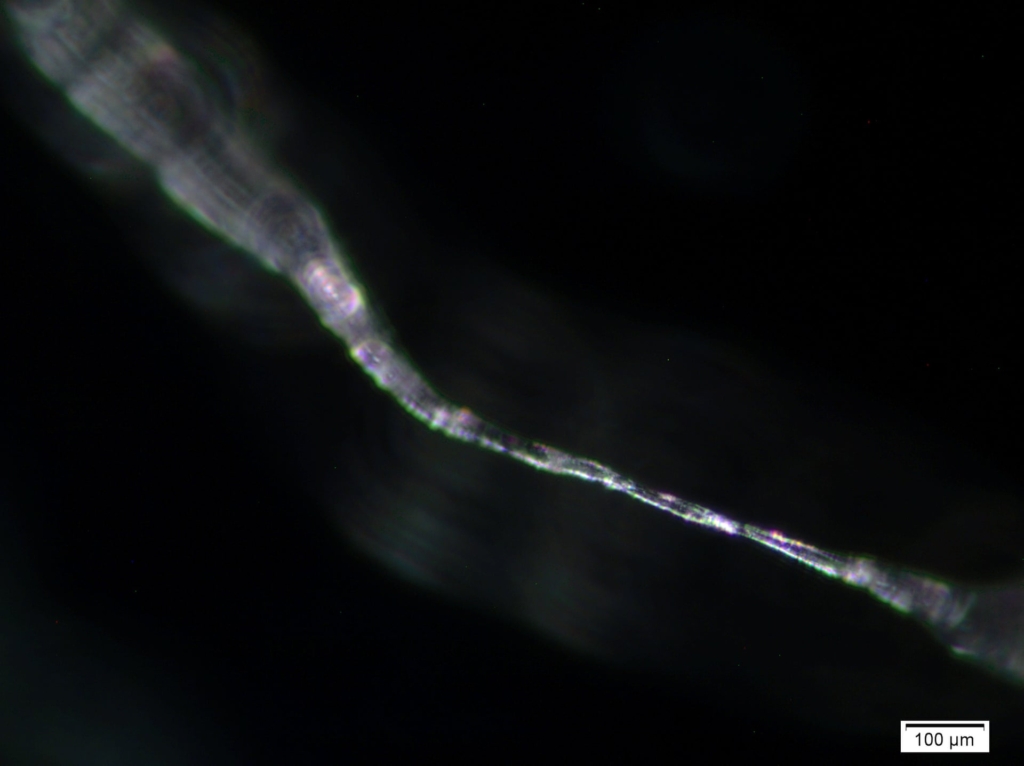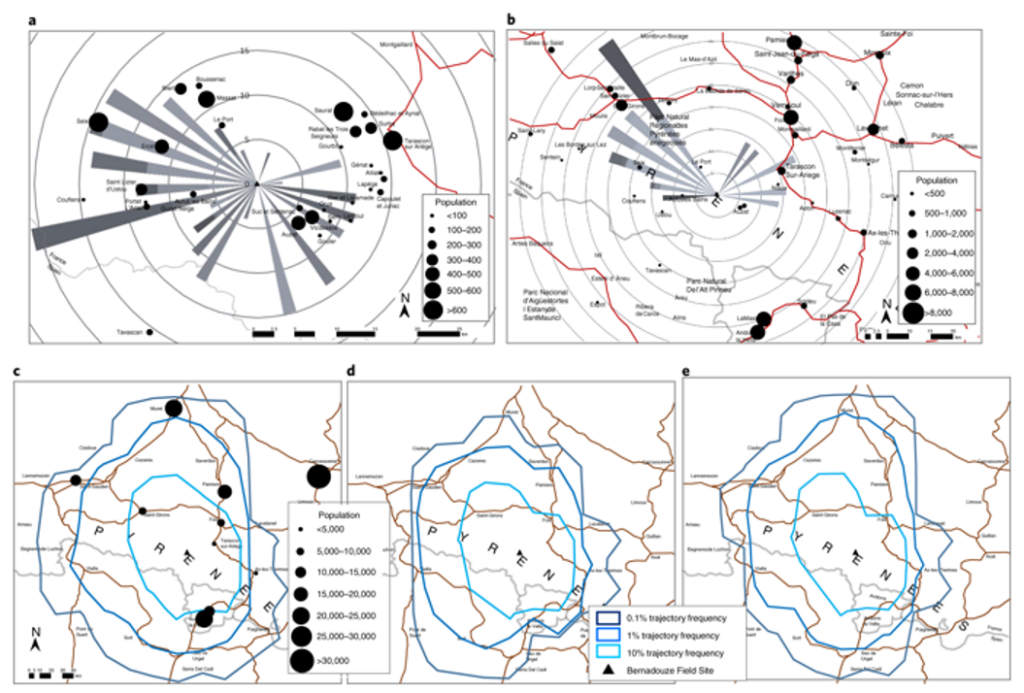Winds carry microplastics “anywhere and everywhere”, even to remote mountaintops – “It’s astounding and worrying that so many particles were found in the Pyrenees”

By Damian Carrington
15 April 2019
(The Guardian) – Microplastic is raining down on even remote mountaintops, a new study has revealed, with winds having the capacity to carry the pollution “anywhere and everywhere”.
The scientists were astounded by the quantities of microplastic falling from the sky in a supposedly pristine place such as the French stretch of the Pyrenees mountains. Researchers are now finding microplastics everywhere they look; in rivers, the deepest oceans and soils around the world.
Other recent studies have found microplastics in farmland soils near Shanghai, China, in the Galápagos Islands, a Unesco world heritage site, and in rivers in the Czech Republic. Humans and other animals are known to consume the tiny plastic particles via food and water, but the potential health effects on people and ecosystems are as yet unknown.
However the ubiquity of the pollution means it needs to be taken very seriously, said Steve Allen, at the EcoLab research institute near Toulouse and who led the new work in the Pyrenees: “If it is going to be a problem, it is going to be a very big problem. I don’t think there is an organism on Earth that is immune to this.”
About 335m tonnes of plastic is produced each year – while it degrades extremely slowly, it can be broken into smaller and smaller pieces. Microplastic pollution in rivers and oceans is now well known but just two previous studies have looked at its presence in the air, one in Paris, France, and another in Dongguan, China. Both found a steady fall of particles.
The new study, published in Nature Geoscience, is the first to show microplastic is raining down just as hard in remote environments and that it can travel across significant distances through wind. The team collected samples from high altitudes in the Pyrenees that were far from sources of plastic waste – the nearest village was 6km away, the nearest town 25km, and the nearest city 120km.
They found an average of 365 plastic particles, fibres and films were deposited per square metre every day. “It’s astounding and worrying that so many particles were found,” said Allen.
“It is comparable to what was found in the centre of Paris and Dongguan, and those are megacities where a lot of pollution is expected,” said Deonie Allen, also at EcoLab and part of the team. “Because we were on the top of a remote mountain, and there is no close source, there is the potential for microplastic to be anywhere and everywhere.” [more]
Winds carry microplastics ‘everywhere’ – even on to remote mountaintops

Microplastics blown by wind found in remote mountainous region
15 April 2019 (University of Strathclyde) – Researchers have found microplastics in a remote region of the Pyrenees mountain range.
A scientific study collected samples over a five-month period from a secluded area of the mountains, which form a natural border between France and Spain.
The research paper: ‘Atmospheric transport and deposition of microplastics in a remote mountain catchment’ published in the Nature Geoscience research journal, reveals that samples from two separate monitoring devices were analysed to identify whether the tiny plastic pieces, invisible to the naked eye and less than five millimetres long, were present in the largely inaccessible mountain area.
Despite the remote location, researchers recorded average daily counts of 365 deposits per square metre of the pervasive material.
It isn’t yet known the extent of the distance that microplastics can travel, but the research also reveals that the analysis of air trajectory shows fragments are travelling through the atmosphere over distances of at least almost 60 miles.
Astounding and worrying
Joint lead researcher Steve Allen, a researcher at EcoLab, Toulouse and a PhD student from the University of Strathclyde, said: “It’s astounding and worrying that so many particles were found in the Pyrenees field site.
“What we can unequivocally prove is that it’s being transported there by the wind.
“It opens up the possibility that it’s not only in the cities are you breathing this in, but it can travel quite some distance from the sources.
“Plastic litter is an increasing global issue and one of the key environmental challenges we face on global scale.”
Co-author Dr Deonie Allen of EcoLab added: “The drivers in plastic degradation are fairly well known, but the transport drivers and mechanisms – especially atmospheric transport – for microplastic appears to be complex and an area of research that now needs to be unravelled.”
Uncontaminated areas
The team, a collaboration between the University of Strathclyde and the French National Research Centre at the University of Toulouse, collected samples from the field site in south west France from an ‘uncontaminated’ area just over four miles away from the nearest village and around 75 miles from the nearest city of Toulouse.
The area is considered to be pristine, untouched wilderness due to a lack of development, its inaccessibility and distance from major cities and industrial centres.
Dr Gael Le Roux from EcoLab said: “This mountainous area has been the subject of numerous interdisciplinary studies in ecology and environment over the past decade but we would still never have anticipated that this latest study would reveal such high levels of microplastics deposits.”
Local rain, wind speed and snow fall was also recorded during the winter period of 2017 to 2018.
Steve Allen added: “The meteorological station there has two existing deposition collectors, which supplied us with the samples. We measured it over a five-month period during the winter which was significant as the Pyrenees are generally covered in snow and the ground is damp.
“This is likely to make it harder for plastic dust to be lifted up into the air which raises the question of how far it had come from.”
Microplastics, which are completely invisible to the naked eye, can be harmful to oceans and aquatic life.
They have been found in tap water around the world and in some of the most remote places on earth, with studies showing they have even reached Antarctica.
As well as the physical fragments, toxins added during manufacturing and organic pollutants gathered during air and water travel also accumulate in ecosystems.
Steve Allen added: We don’t know if they are harmful, but there have been studies on mice and fish in lab conditions with virgin laboratory grown plastic which have shown the effects of digesting or breathing in microplastics can lead to changes in behaviour in things like feeding and mating habits.
“We don’t know how much of a difference there is between this lab grown plastic and the microplastics in the environment which can pick up things like pesticides, but we do know we need to stop the plastic going into the environment and we need to stop our use of it.”
The French National Research Agency, the Agence Nationale de la Recherche, funded the research through Ecolab, Campus ENSAT and the Marie Curie Prestige Fellowship.
Microplastics blown by wind found in remote mountainous region
ABSTRACT: Plastic litter is an ever-increasing global issue and one of this generation’s key environmental challenges. Microplastics have reached oceans via river transport on a global scale. With the exception of two megacities, Paris (France) and Dongguan (China), there is a lack of information on atmospheric microplastic deposition or transport. Here we present the observations of atmospheric microplastic deposition in a remote, pristine mountain catchment (French Pyrenees). We analysed samples, taken over five months, that represent atmospheric wet and dry deposition and identified fibres up to ~750 µm long and fragments ≤300 µm as microplastics. We document relative daily counts of 249 fragments, 73 films and 44 fibres per square metre that deposited on the catchment. An air mass trajectory analysis shows microplastic transport through the atmosphere over a distance of up to 95 km. We suggest that microplastics can reach and affect remote, sparsely inhabited areas through atmospheric transport.
Atmospheric transport and deposition of microplastics in a remote mountain catchment
Nature is typified by strength; humanity by weakness. Nature adheres to an immutable order; humanity to an ever-increasing chaos. Nature recognizes no equality at any level of its order; humanity preaches an all-pervasive equality and freely hands-out unearned “rights” in an attempt to make its doctrine a living reality.